So what exactly causes tomato blight – and is there really any way to keep it off of your plants?
Those two questions are on the minds of many a gardener each and every growing season – and for good reason! Tomato blight can wreak havoc on tomato plants and their yields. And unfortunately, once you start to see the damage, it’s often too late to stop it from killing the entire plant.
A few spots on a single leaf can quickly spread to damage stems, more leaves and even the fruit itself. Even worse, once one plant is infected, blight can quickly spread to other nearby plants as well. And if left unchecked, your entire tomato crop can be totally wiped out in no time at all.
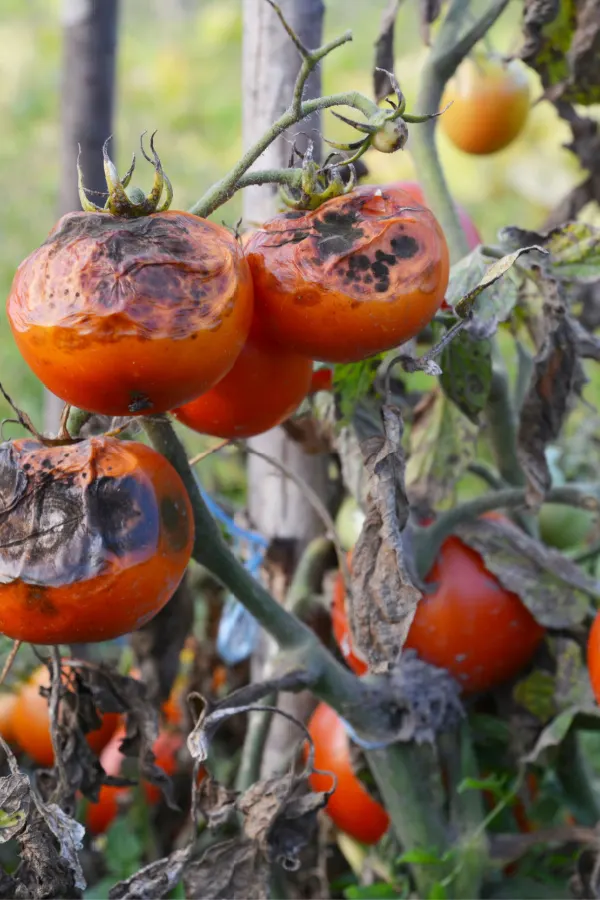
While blight most commonly affects tomato plants, all plants in the Nightshade family are susceptible. That means potatoes, peppers, and even eggplant crops are also at risk once the disease is present. Which, of course, is all the more reason to keep this deadly disease away at all costs.
With that in mind, here is a look at what tomato blight is, and more importantly, how to prevent it from finding its way into your garden!
What Is Tomato Blight – And What Causes It?
Tomato blight is a fungal disease that is spread through spores in the soil. The tomato blight spores arrive by many different means. They can be blown in from the wind, carried by insects, birds, and other animals and even transferred from rain droplets.
Unfortunately, one of the most common ways they are spread are from plants that are already infected. As you will see later in the article, that is why early detection of this deadly disease can be so important to keeping it out.
The bad news is that once spores find a way into your soil, they can stay there for a long time. In fact, spores can live in the soil for up to five years – managing to stay alive just fine through the harshest of winters.
The Three Types Of Tomato Blight
There are three main types of tomato blight that can affect plants, leaf-spot blight, early season blight, and late season blight.
Leaf spot blight is what you most often see in home garden spaces. It appears around the late June to early July months and will start on the lower foliage of plants. It starts with a few dark spots on leaves. The leaves then will start to turn brown and then eventually black.
Sooner or later, leaf spot tomato blight will cause the leaves to fall off altogether. Usually, the process takes about a month – and most often, wipes out nearly all hopes of a harvest.
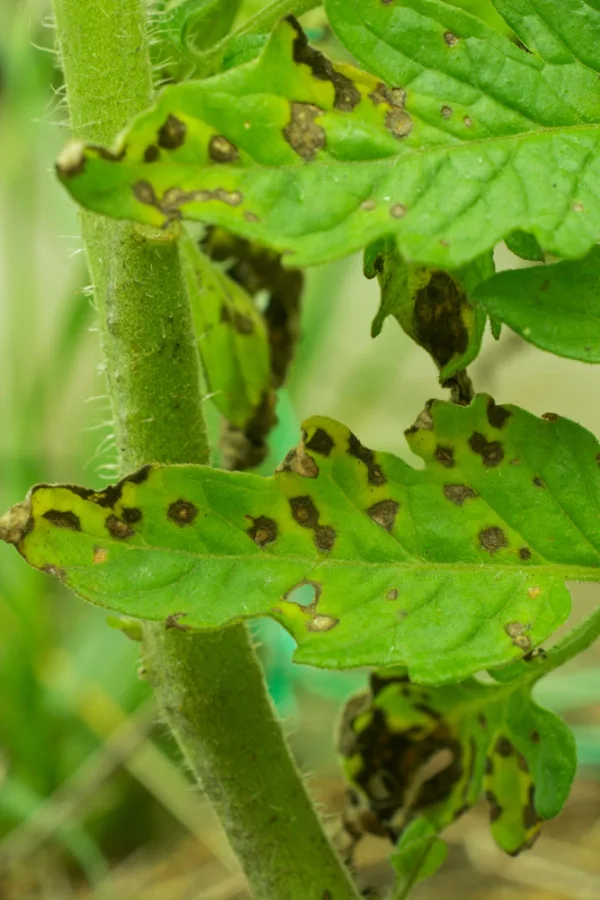
Early Tomato Blight
Early tomato blight doesn’t appear until after the plant starts to set fruit. While it doesn’t directly affect the fruit, it will end up killing all of the foliage. This, in turn, has an indirect effect on the fruit’s growth. Without leaves, the plant simply can’t produce energy to create more fruit.
Even worse, without any foliage for protection, any fruit that remains is usually damaged by sun-scald. The weakened plants are also an easier target for becoming prey to hungry animals or insects.
Late Tomato Blight
The third type of blight that can hit tomato plants is known as late season blight. As it name indicates, this type of blight occurs late in the summer and or early fall. You can recognize this type of blight by seeing small, lightly-colored circles or spots appear on the plant’s leaves.
As time goes on, the damage affects not only the foliage but the fruit as well. The cooler, damp temperatures that often occur late in the growing season are the biggest aid in helping late season blight to occur. You can also see late blight if you’ve experienced an overly rainy and wet growing season.
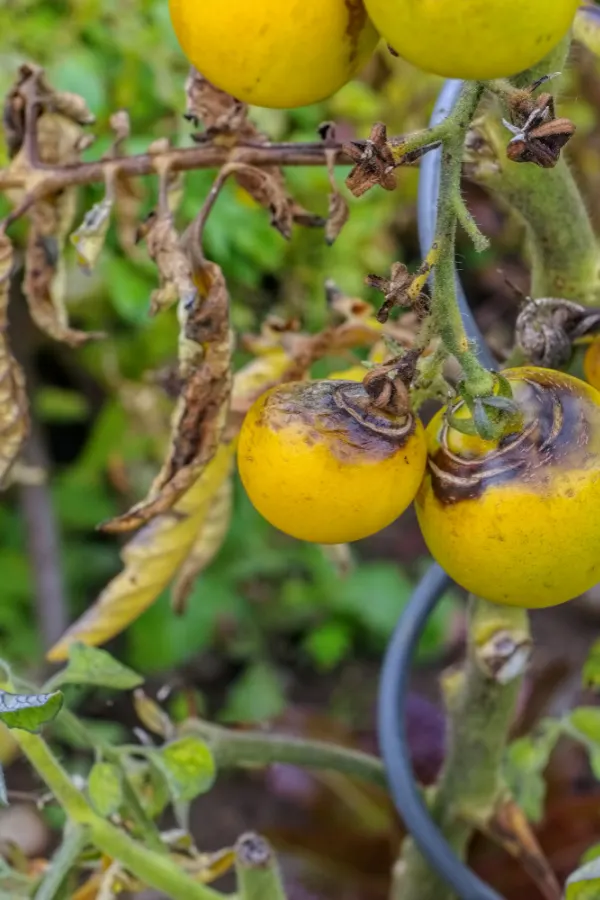
How To Avoid Tomato Blight – What Causes Tomato Blight?
Now that we’ve covered what causes tomato blight as well as the different types that can appear in your garden – let’s take a look at the best ways to keep it from finding a home on your plants and in your soil!
As mentioned earlier, prevention is truly the number one key to success. The good news is that with just a few simple steps and practices, you can keep blight from ruining your plants and your harvest. Not just for this year- but for future garden seasons to come.
With that in mind – let’s take a look at the very first step in preventing blight – crop rotation!
Rotate Crops – What Causes Tomato Blight?
One of the absolute best methods for preventing tomato blight is by rotating your crops each and ever year.
Rotating your crops is the process of changing the location of where each crop grows with each passing season. When it comes to preventing blight, it means making sure you don’t plant tomatoes in the same space you did the previous year.
Why is this so important for preventing blight? Because the spores that causes it can take up residence in the soil below. And once they do, they can simply splash up onto the leaves the following year to infect a new set of plants.
Not only does not rotating crops open you up for a case of tomato blight, but all sorts of other issues as well. Tomato plants use up a lot of nutrients from the soil. And when you plant them in the same soil year after year, those nutrients can become depleted, leaving plants weak from malnutrition.
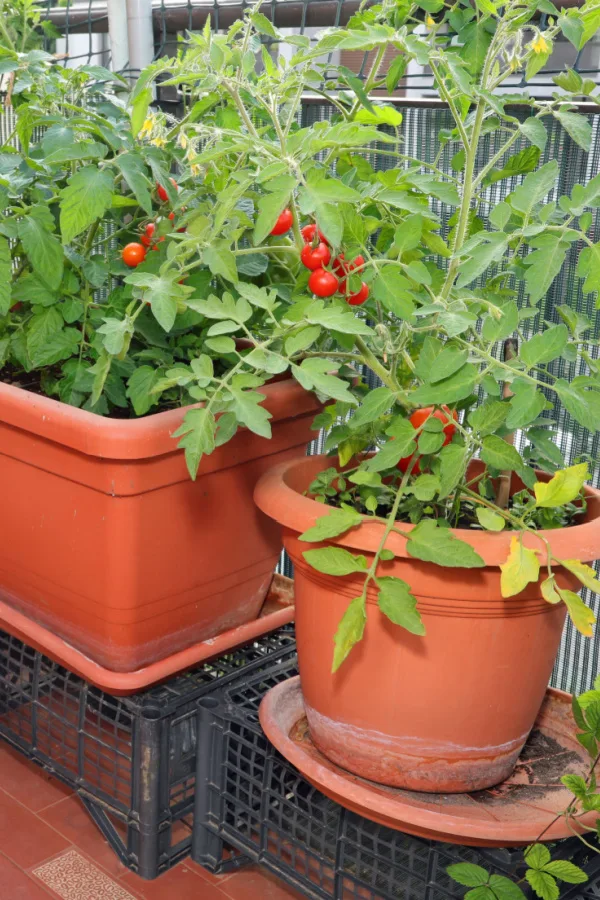
For best practices rotate your tomato plants every year to a new location in the garden. In addition, try to go at least three to four years before growing your tomato plants back into the same space. Container plants are also quite susceptible to blight, so If you are growing tomatoes in 5-gallon buckets or containers, always replace the soil each year.
Mulch Plants – What Causes Tomato Blight?
It’s no secret that using mulch around garden plants is a great way to help regulate the soil temperature. It can also help increase moisture levels and help suppress weeds. But mulch is also critical in preventing soil-borne diseases like tomato blight as well.
When plants are watered or if it rains, tomato blight spores that might be present in the bare soil can easily be splashed up onto healthy foliage. However, if the plants have mulch instead of bare soil, those spores have a much harder time splashing up onto the foliage.
Mulch can also help spores from finding open soil to take up residence. If bare soil is available and the spores find a home, they can simply lay in wait for plants to arrive the following year. It is exactly why keeping soil covered at all times is so important!
To help keep plants safe, add several inches of organic mulch around the base of the plants after transplanting. Shredded leaves, grass clippings, and straw are all perfect mulches that can be used. Be sure to add more mulch as the growing season progresses if the mulch begins to break down.
Trim & Support Plants – What Causes Tomato Blight?
While mulch can help cover the bare soil and keep the spores from splashing up onto foliage, you can also keep your plants safe by keeping them pruned, trimmed up and supported.
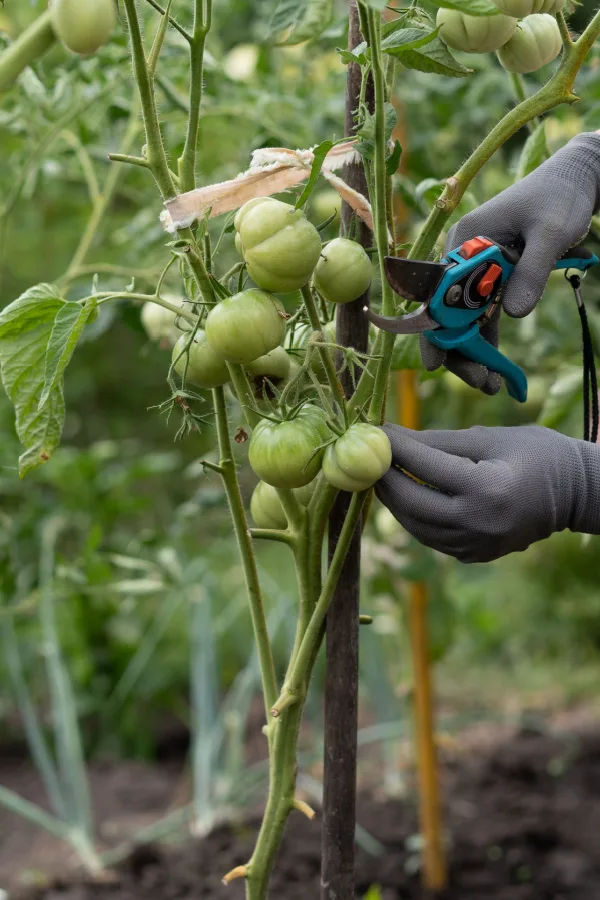
After your tomato plants begin to grow and establish, trim the lower branches off. This will leave room between the mulch and the bottom set of leaves. Not only will trimming up the bottom of the plants help keep the lower foliage from touching the soil, but it will also improve the airflow for the plants as well.
It is equally important to support your tomato plants well. Good tomato supports not only keep the plant from sprawling onto the soil surface, it also keeps the limbs from sustaining damage. Whether you use stakes, cages or your own homemade tomato supports, keep your plants up and off the ground where they can stay safe!
Water Properly – What Causes Tomato Blight?
The last tip for avoiding tomato blight has to do with how you water your plants. Yes, believe it or not, how you water your tomato plants can actually help blight spread if it’s present!
For starters, only water around the base of the plants and not directly over the foliage. The less moisture you can get on the foliage, the better. Remember, spores can be present on the surface, and having water splash up onto the leaves can easily bring spores with the water.
In addition, water your plants (and all garden crops) early in the morning to allow the plants plenty of time to dry off during the day. Since tomato blight thrives in moist and cool conditions, watering early allows the plants to dry out before the cooler nighttime hours arrive.
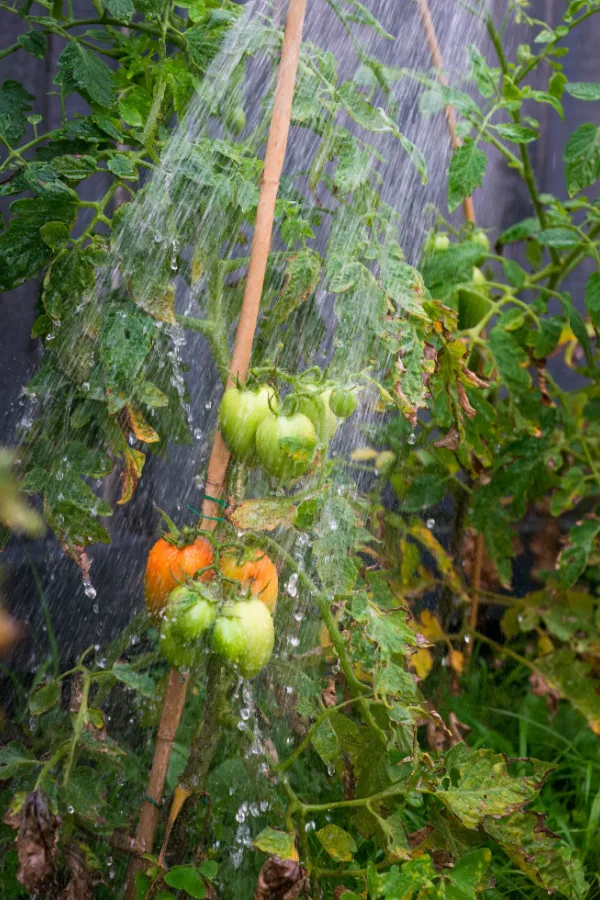
If You Do Notice Tomato Blight . . .
So what happens if you do everything right and still see the first signs of blight? Once again, the key to success here is early action to help lessen the damage and stop the spread.
First, remove any and all foliage that has started to show damage as soon as possible. Don’t allow the cut diseased foliage to land on your soil. Instead, immediately bag it up and dispose of it properly. Do not add this affected foliage to your compost pile since the spores can live and overwinter there.
Also, be sure to disinfect your pruners between each plant and before using them again on healthy tissue. If you don’t take this step, you can easily spread the spores to other plants you are pruning back.
Here is to growing your best tomato plants ever this year – and to keeping them safe from blight all season long!
Follow Our Facebook Page For Even More Great Tips! Simple Garden Life Facebook Page
Simple Garden Life is a website dedicated to keeping gardening fun, simple and enjoyable! We publish two new articles each week along with a new garden podcast episode every two weeks. This article may contain affiliate links.
